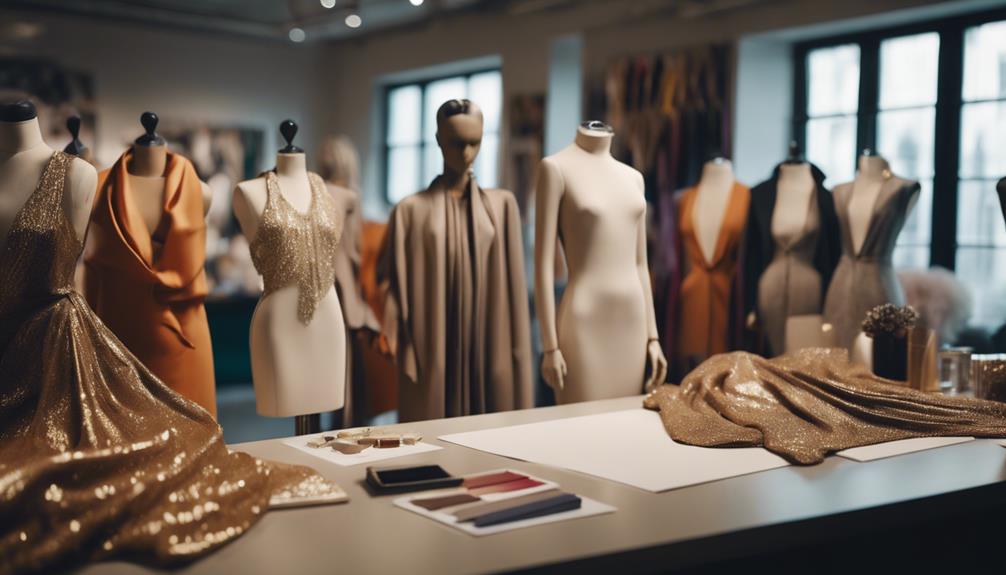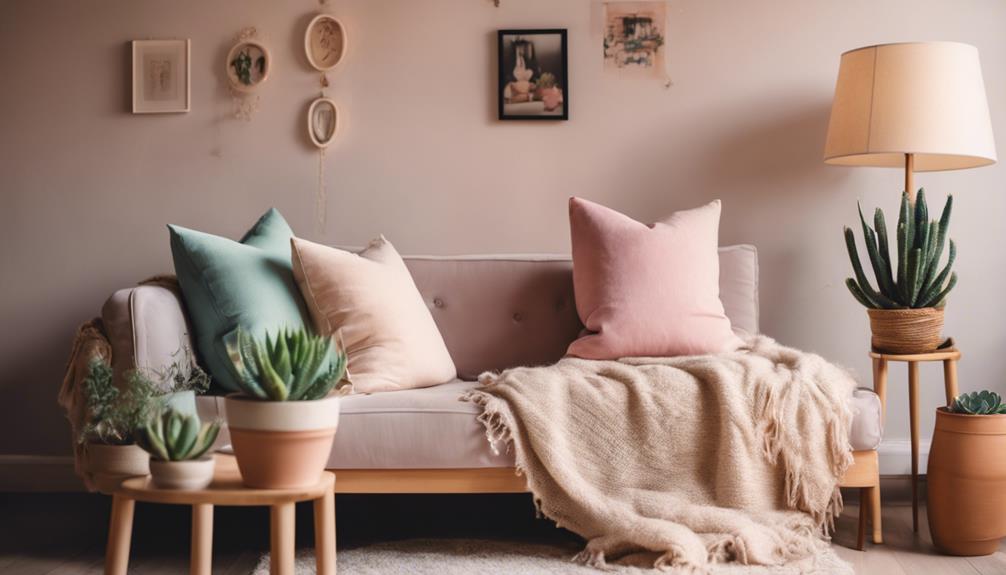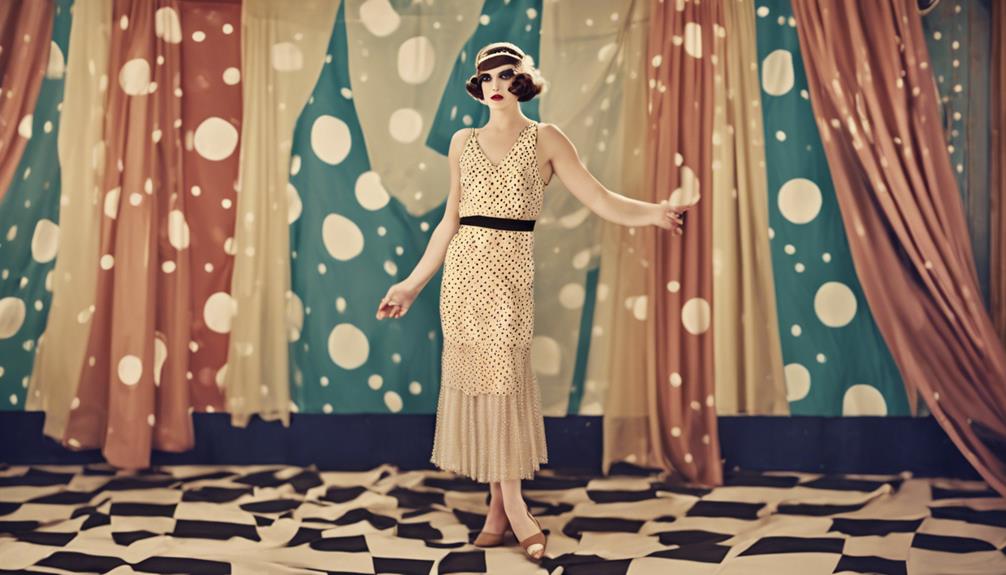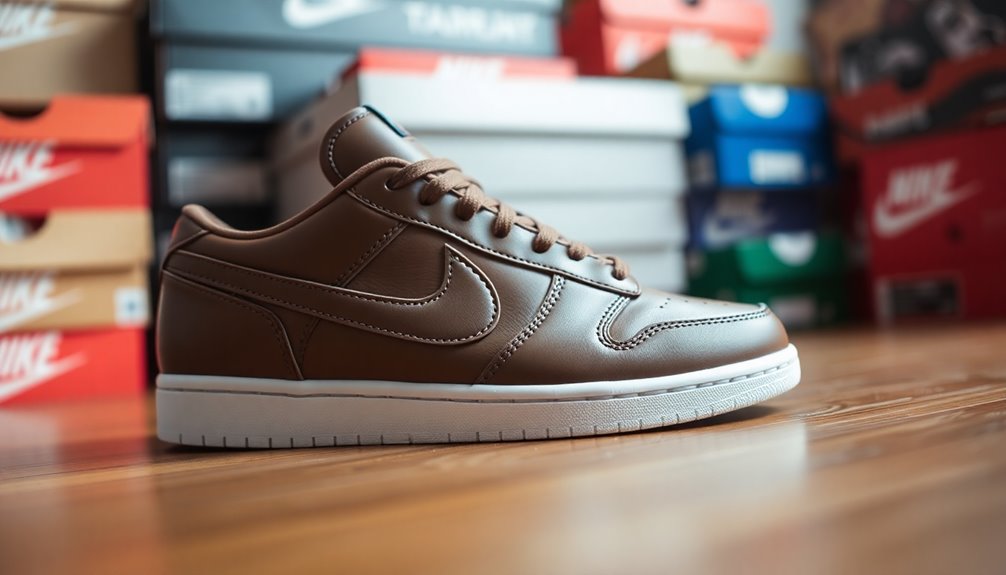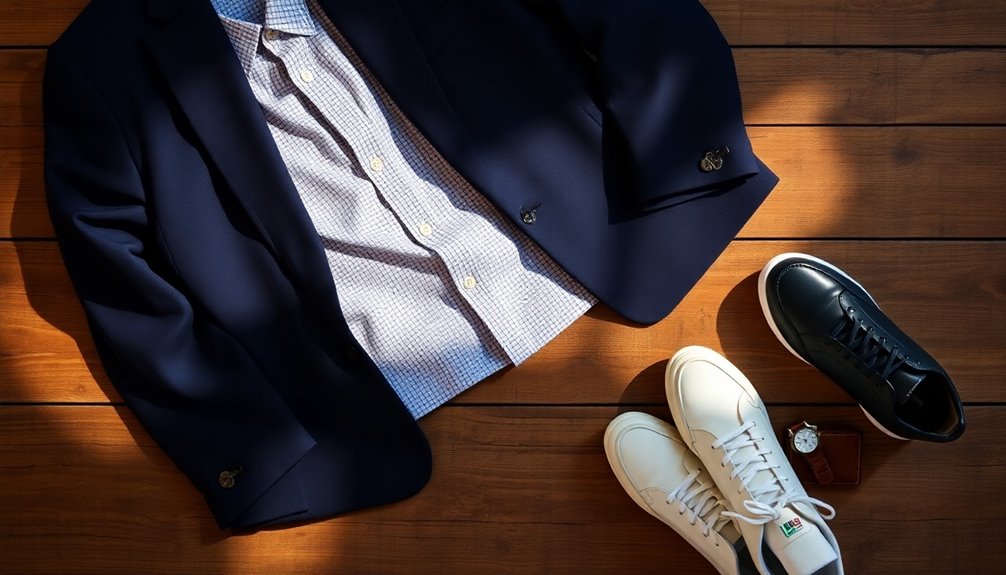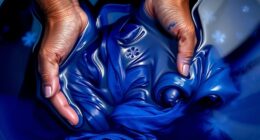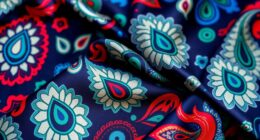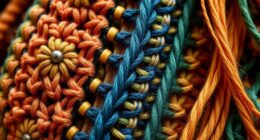As a fashion designer, you can anticipate earning an average of $85,760 in the U.S. However, top professionals in the field frequently make over $150,000 annually. Your location also plays a crucial role; metropolitan areas such as New York and California typically offer higher salaries. With experience, your pay can increase even further, often surpassing the $100,000 threshold. Additional bonuses and commissions can contribute to your overall earnings. If you’re interested in learning more about the factors that affect these numbers and the career paths of others, there is plenty of information to delve into.
Key Takeaways
- Average salary for fashion designers in the U.S. is approximately $85,760 annually.
- Top designers can earn over $100,000, with the highest earners making upwards of $150,000 per year.
- Geographic location significantly influences earnings, with urban centers offering higher compensation.
- Experience in the industry can lead to salaries ranging from $80,000 to over $100,000.
Origin and historical background of the fashion trend/style
Understanding fashion's transformation through the decades can give you insight into today's trends.
You'll see how cultural icons and movements shaped styles, from the elegance of haute couture to the vibrant expressions of youth culture in the 60s and 70s.
This historical context not only enriches your design perspective but also helps you connect with the evolving landscape of fashion.
Fashion's Transformation Through Decades
Fashion has evolved dramatically over the decades, mirroring the social, political, and economic shifts that shaped each era.
In the 1920s, flapper styles emerged, symbolizing women's liberation and changing societal norms. The 1960s introduced ready-to-wear clothing, revolutionizing the industry by making trendy apparel accessible to everyone, which greatly impacted fashion designer salaries as demand increased.
As you moved into the 1970s, individualism took center stage, with diverse styles like bohemian, punk, and disco reflecting a cultural shift towards personal expression.
Fast forward to the late 20th century, and sustainable fashion became a focus, driven by rising environmental awareness and a demand for ethically produced clothing. This transformation highlighted the evolving responsibilities of designers and their impact on the industry.
In the 21st century, the integration of digital technology and e-commerce has completely reshaped how fashion is created, marketed, and sold. Online shopping and digital fashion shows have become the norm, providing new avenues for designers to showcase their work.
With these shifts, fashion designer salaries have also changed, often reflecting the growing importance of adaptability and innovation in the field.
Cultural Icons and Movements
Cultural icons have shaped fashion movements throughout history, each leaving a lasting impact on style and society. Designers like Coco Chanel and Christian Dior revolutionized fashion with their innovative ideas.
Chanel introduced casual elegance, allowing women to break free from restrictive styles, while Dior's 'New Look' redefined women's silhouettes in the post-war era, emphasizing femininity and luxury.
In the 1960s, youth-driven fashion emerged with cultural icons like Mary Quant, who popularized the miniskirt—a bold statement of liberation and rebellion against traditional norms. The punk movement of the 1970s, championed by Vivienne Westwood, used fashion as a form of protest, embracing ripped clothing and provocative imagery to challenge societal expectations.
As we moved into the 1980s, streetwear took center stage, influenced by figures like Jean-Paul Gaultier and the rise of hip-hop culture, blending high fashion with everyday styles. The 1990s and 2000s marked the rise of minimalism, with designers like Jil Sander and Calvin Klein emphasizing clean lines and practicality, reflecting a cultural shift towards sustainability in fashion.
These cultural icons and their movements continue to inspire today's fashion landscape.
Key Characteristics
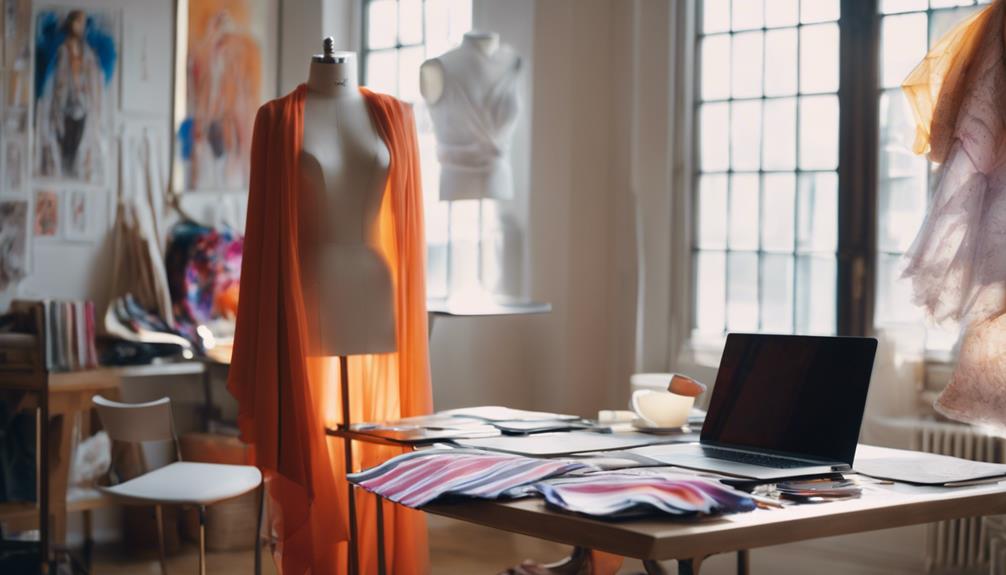
As you explore the world of fashion design, you'll notice key characteristics that set successful designers apart.
From signature silhouettes and patterns to the use of sustainable fabrics and timeless handbags, these elements define their unique style.
Understanding these traits can help you appreciate the art behind fashion and the effort that goes into each collection.
Signature Silhouettes and Patterns
Signature silhouettes and patterns play an essential role in defining a designer's unique aesthetic, making their work instantly recognizable to consumers. When you think of iconic shapes, consider the hourglass figure that Christian Dior popularized. These signature silhouettes set trends and often influence what consumers seek in fashion.
Patterns also serve as a key element in a designer's collection, with many top designers showcasing unique prints that reflect their brand identity. For instance, Marc Jacobs is known for his playful graphics, which contribute greatly to his brand's appeal.
Additionally, the materials and textures used can heighten a designer's distinctive style. While many designers earn recognition for their innovative techniques and construction methods, like Alexander McQueen's elaborate tailoring, others, such as Stella McCartney, focus on sustainable fabrics to resonate with eco-conscious consumers.
Ultimately, signature silhouettes and patterns not only create brand recognition but also shape fashion trends, influencing consumer preferences and industry standards. So, when you admire a designer's work, you're often witnessing a blend of creativity and strategy that defines their success in the fashion world.
Sustainable Fabrics and Dyes
Sustainable fabrics and dyes increasingly focus on minimizing environmental impact while maintaining high-quality standards. As a fashion designer, you make choices that can greatly influence the planet. By opting for organic materials like cotton, hemp, and bamboo, you reduce the environmental footprint of your collections. These fabrics not only feel great but also align with eco-conscious consumer values.
When selecting dyes, you can choose those derived from natural sources, such as plants and minerals. This decision cuts down on harmful chemicals that often pollute waterways and harm ecosystems. In addition, the production processes for sustainable fabrics often utilize water-saving techniques and renewable energy sources, contributing to a lower overall carbon footprint.
Certifications like Global Organic Textile Standard (GOTS) and OEKO-TEX guarantee that the materials you use adhere to strict environmental and social criteria. This transparency enhances your brand's credibility and appeal.
As sustainable fashion gains traction, the demand for biodegradable and recycled fabrics is growing. In this evolving landscape, fashion designers make a notable impact by embracing sustainable practices, creating stylish yet responsible collections that resonate with today's eco-aware consumers.
Timeless Designer Handbags
Timeless designer handbags embody elegance and quality, showcasing high-grade materials and iconic silhouettes that stand the test of time. When you think of fashion, these handbags often come to mind due to their enduring appeal and luxury status. Crafted from premium leather, they offer both durability and a sophisticated touch, making them a worthy investment.
Iconic designs, such as the Chanel 2.55 and Hermès Birkin, set these handbags apart, ensuring they remain recognized and coveted across generations. The meticulous craftsmanship and unique embellishments highlight the attention to detail that elevates a handbag's status to timeless.
Limited production runs or exclusive releases by designers further enhance their desirability, creating a sense of scarcity that many fashion enthusiasts seek. You'll also find that classic color palettes, including black, beige, and navy, dominate these timeless designs, ensuring they remain versatile and relevant through shifting fashion trends.
In essence, timeless designer handbags are more than just accessories; they're symbols of style and sophistication that resonate with individuals who appreciate enduring fashion. Investing in one not only adds elegance to your wardrobe but also offers a piece of fashion history.
Modern Interpretation
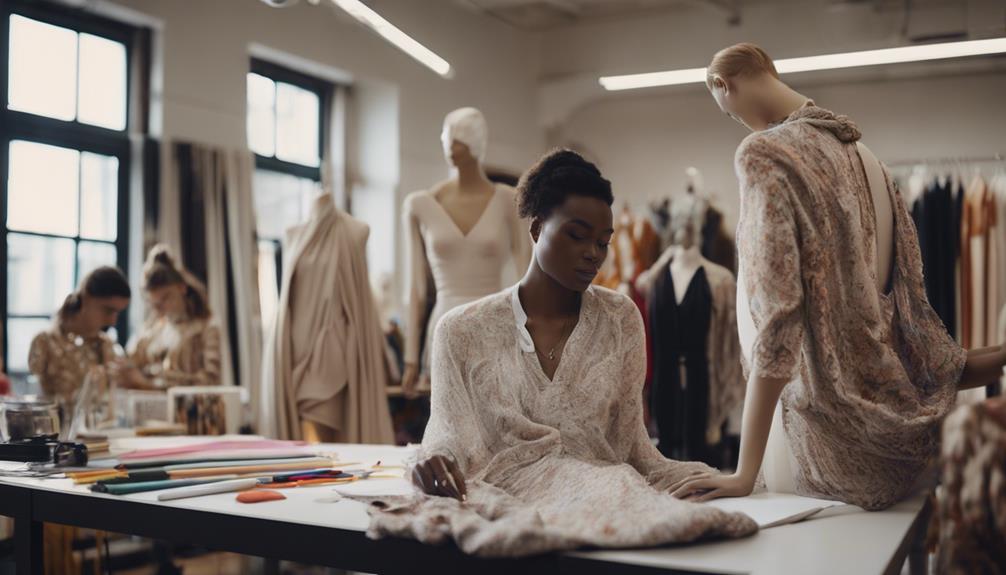
Today's fashion landscape is shaped by sustainable innovations, which you might find intriguing as they redefine industry standards.
Luxury fashion houses are also adapting, often inspired by icons like Rihanna, who push the boundaries of style and creativity.
It's fascinating to see how these elements influence not just design, but also the potential earnings for fashion designers.
Sustainable Fashion Innovations
The rise of eco-conscious consumers is reshaping the fashion landscape, prompting designers to explore innovative materials and practices that prioritize environmental responsibility.
As you immerse yourself in sustainable fashion innovations, you'll notice a significant shift in how designers design their collections. The demand for eco-friendly options is driving job creation in the industry, with a projected growth of 3% for fashion designers through 2031.
Designers specializing in sustainable fashion often command higher salaries, reflecting the increased market interest in environmentally friendly practices. Top brands are integrating sustainable practices, leading to new roles focused on sustainable design and production methods.
Innovations like recycled materials and biodegradable textiles not only enhance the aesthetic appeal of clothing but also contribute to a growing niche market, boosting your earning potential.
To stay competitive, it's crucial to engage in continuous education and skill development in sustainable practices. By honing these skills, you can advance your career and salary prospects in this evolving sector.
Embracing sustainable fashion innovations isn't just a trend; it's a necessary evolution that can elevate your role as a designer in today's conscious marketplace.
Luxury Fashion Houses
Exploring the domain of luxury fashion houses reveals a dynamic landscape where creativity and exclusivity drive not only design but also impressive salary potentials.
If you're aiming for a career in this sector, you'll be pleased to know that top fashion designers can earn upwards of $100,000 annually, and the highest earners often make over $150,000 per year. Compared to retail positions, the average salary for a fashion designer in luxury brands is remarkably higher, reflecting the prestige associated with high-end fashion.
Your salary can vary widely based on your location; urban centers like New York and California typically offer some of the highest compensation packages. If you have experience, you can expect to command salaries between $80,000 and over $100,000, depending on your portfolio and industry reputation.
The competitive nature of this field also means many designers receive additional compensation through bonuses and commissions, further enhancing your overall earnings.
In luxury fashion houses, not only does your creativity shine, but so does your earning potential, making this an exciting avenue for passionate designers like you.
Fashion Icons Like Rihanna
Influencing the fashion landscape, icons like Rihanna not only make waves with their designs but also generate impressive revenue streams through their innovative brands. Her brand Fenty, for instance, reportedly generated over $1 billion in its first year. This success illustrates how fashion designers can leverage their celebrity status to create lucrative ventures.
Rihanna's partnership with LVMH marked a significant milestone, as she became the first woman of color to lead a luxury brand. This groundbreaking achievement not only showcased her talent but also highlighted the immense earning potential available to top fashion designers today. Collaborations with major retailers, such as her work with Puma, further emphasize how these designers can earn millions while shaping trends.
In the fashion industry, many designers achieve annual incomes well over $100,000, especially when tied to iconic brands or their successful labels. Rihanna's influence extends beyond revenue; her designs often set trends, illustrating how successful fashion designers can impact the industry while maximizing their income potential.
This modern interpretation of fashion icons like Rihanna showcases the evolving dynamics of fashion and the financial opportunities within it.
Styling Tips
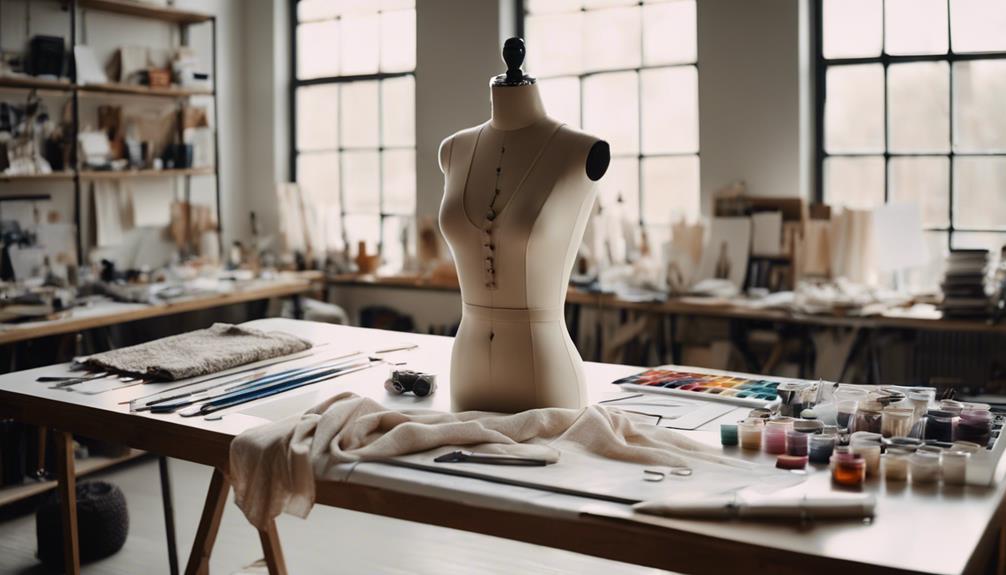
When it comes to styling, a classic white button-up shirt is a must-have in your wardrobe.
You can elevate your looks by mastering layering techniques and skillfully combining patterns and textures.
Let's explore how these elements can transform your outfits into standout statements.
Classic White Button-Up Shirt
A classic white button-up shirt is your go-to piece for effortlessly elevating any outfit, whether you're headed to the office or out for a casual brunch. This versatile wardrobe staple can seamlessly shift from professional settings to relaxed outings, making it a smart investment for your closet—especially if you're aiming for a designer salary.
For a polished office look, pair your shirt with tailored trousers and a blazer. If you prefer a more laid-back vibe, jeans and sneakers are perfect companions. To add a chic twist, try knotting the shirt at your waist or tucking it into high-waisted bottoms. Layering it under a sweater or dress also brings added dimension to your ensemble.
Don't forget the power of accessories! Statement jewelry, a colorful scarf, or a stylish belt can really enhance your outfit and showcase your personal style.
Layering Techniques for Versatile Looks
Mastering layering techniques can elevate your wardrobe, allowing you to create versatile looks that suit any occasion. Fashion designers often use layering to combine different clothing items, providing both warmth and visual interest.
Start by pairing contrasting textures; for instance, a chunky knit sweater looks stunning layered over a sleek silk blouse. This not only adds depth but also creates a stylish ensemble.
Play with proportions to achieve a balanced silhouette. Consider wearing a long cardigan over a cropped top for an eye-catching effect that flatters your figure. Accessories can also play a pivotal role in your layered outfits. Incorporate scarves, belts, or statement jewelry to elevate your look and add personal flair.
Don't shy away from experimenting with colors and patterns either. Mixing a striped shirt under a floral dress can yield a unique and fashionable appearance that's sure to turn heads.
Combining Patterns and Textures
Combining patterns and textures transforms your outfits into visually striking ensembles that showcase your personal style. Fashion designers often emphasize the importance of mixing patterns to create depth. For instance, pairing a bold striped top with a floral skirt can make a powerful statement.
To keep your look cohesive, stick to a harmonious color palette; this guarantees your ensemble feels intentional instead of chaotic.
When layering textures, think about how different materials interact. Combining denim with silk or leather can add a sophisticated contrast, elevating even a simple outfit. Scale matters too; mixing a large floral print with smaller polka dots can achieve a balanced aesthetic without overwhelming the eye.
Don't forget about accessories! They can act as a bridge between different patterns and textures. A well-chosen scarf or statement jewelry can tie everything together seamlessly, enhancing your overall look.
Shopping Guide
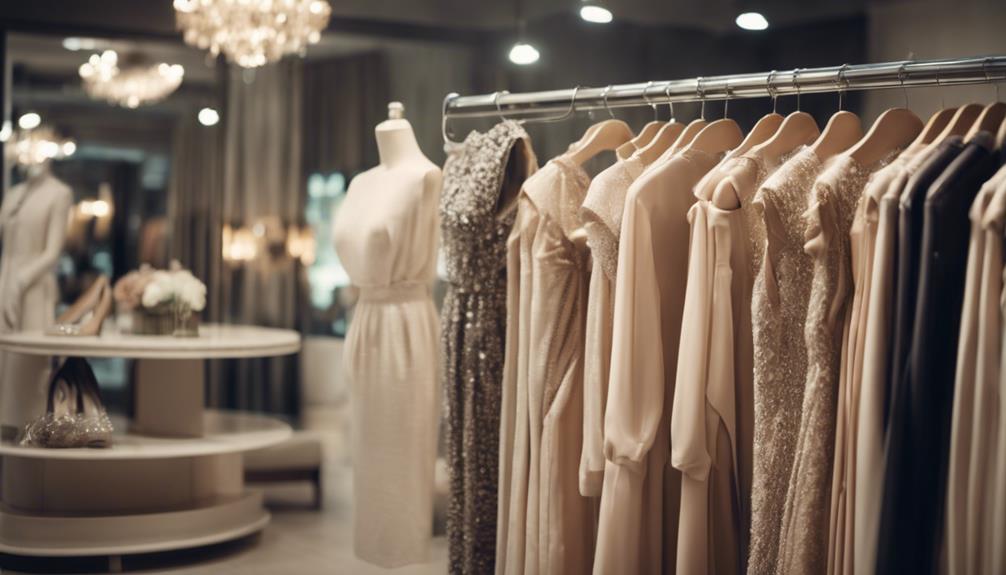
When shopping for fashion, understanding the designer salary landscape can help you appreciate the value of quality pieces. Knowing how much fashion designers earn gives you insight into the craftsmanship and creativity behind the clothes you buy. The average salary for fashion designers in the U.S. is about $85,760, with top designers earning over $104,800. This range reflects the time, skill, and effort designers invest in their work.
When you're browsing, consider the experience level of the designer. Entry-level designers might offer more affordable options, but the quality may not match that of experienced professionals. Also, geographic location matters; designers in cities like San Francisco and Boston often command higher prices due to their cost of living and demand for high-quality fashion.
Don't forget to factor in specialization. Designers in the video industry tend to earn more than apparel designers, which can affect pricing. Remember, investing in a well-crafted piece from a reputable designer can elevate your wardrobe and guarantee you're supporting skilled artisans in the industry.
A thoughtful purchase today can lead to timeless style for years to come.
Upcycling Old Fashion Pieces
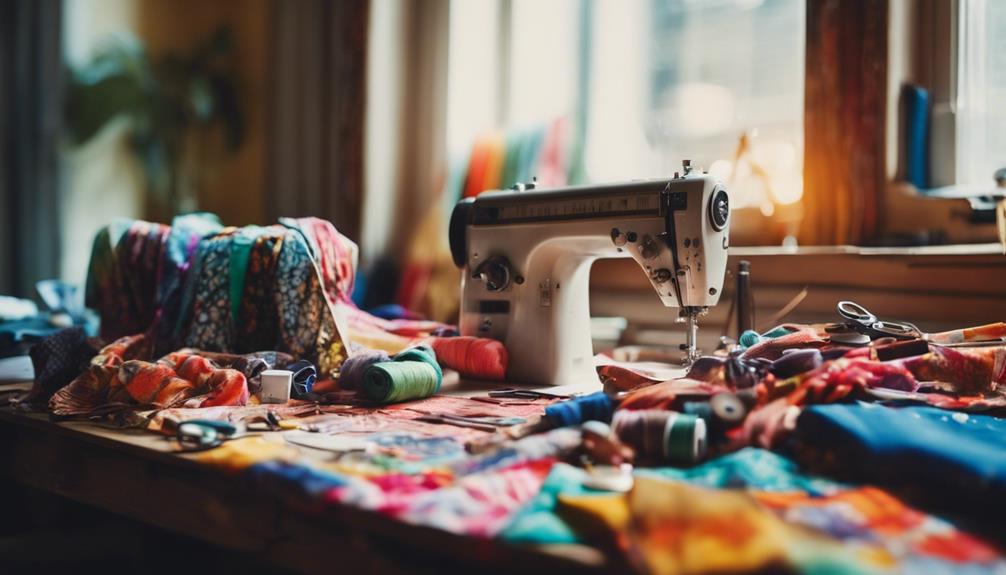
Upcycling vintage clothing can breathe new life into your wardrobe while showcasing your unique style.
By adding personalized embellishments, you can transform basic pieces into standout outfits that reflect your creativity.
This approach not only promotes sustainability but also sets you apart in a market flooded with fast fashion.
Repurposing Vintage Clothing Items
Transforming vintage clothing into trendy new pieces not only showcases your creativity but also promotes sustainable fashion practices. As you immerse yourself in upcycling, you'll find that this process requires a blend of sewing skills, design knowledge, and an innovative mindset. By repurposing old fashion items, you can create stylish pieces that reduce waste while appealing to eco-conscious consumers.
Many designers are now focusing on upcycling, responding to the increasing demand for sustainable fashion solutions. This trend not only helps the environment but also allows you to enhance your portfolio, demonstrating your unique approach to fashion. You'll discover that the market for upcycled clothing is expanding, offering numerous opportunities to sell your creations through online platforms or local boutiques.
As you engage in this creative endeavor, remember that each piece you transform tells a story, and your work can inspire others to embrace sustainable practices. By repurposing vintage items, you not only contribute to the fashion industry's evolution but also make a positive impact on the planet.
Personalized Embellishments for Outfits
Personalized embellishments can revitalize old fashion pieces, turning them into unique garments that reflect your individual style while promoting sustainability. By adding techniques like lace, beading, or embroidery, you can transform basic clothing items into fashionable statement pieces. This approach not only appeals to your sense of creativity but also aligns with the growing demand for eco-conscious fashion.
When you upcycle old fashion pieces, you minimize waste and explore innovative ways to repurpose materials. This trend of personalized embellishments for outfits is gaining traction, and it's projected to drive job creation in the fashion industry by 3% from 2021 to 2031.
As you implement these embellishments, you also enhance the perceived value of your creations, potentially allowing you to charge higher prices for your bespoke designs.
Cultural Impact
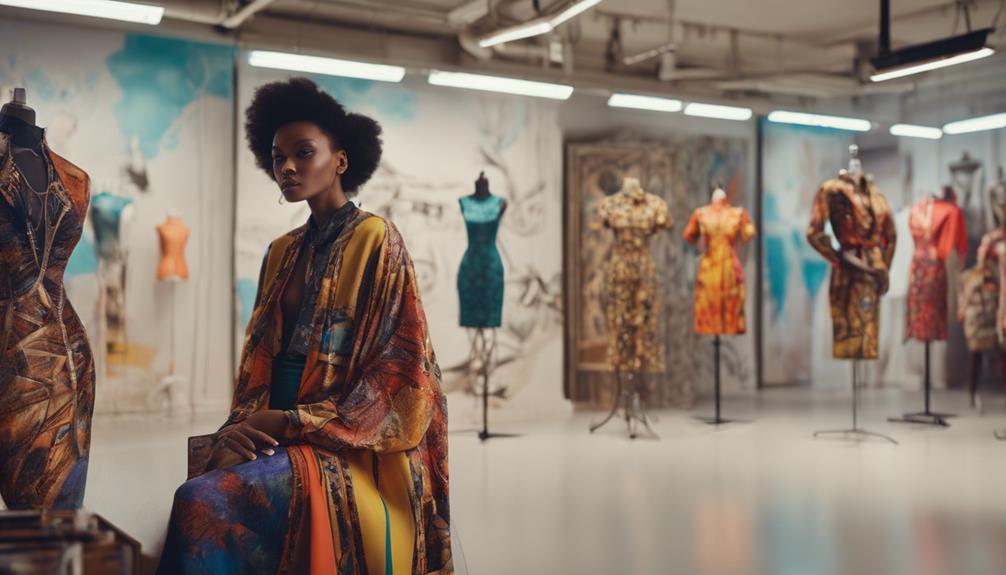
You can see how celebrity fashion often sets trends that ripple through society, influencing what people wear every day.
Fashion activism and representation are becoming essential, with designers using their platforms to advocate for diversity and social change.
This cultural impact not only shapes consumer choices but also plays a significant role in a designer's marketability and salary.
Celebrity Fashion Influence
Celebrity fashion influencers play an essential role in shaping trends and driving demand for specific styles and brands in the marketplace.
When you look at the success of celebrity fashion designers, it becomes clear how their influence can elevate an entire fashion line. These high-profile figures often launch exclusive collections, leveraging their fame to create buzz and excitement around their products.
As a result, their earnings can soar, with top designers raking in over $150,000 annually through brand collaborations and endorsements. The cultural impact of their choices is significant; when a celebrity wears a particular outfit or promotes a fashion label, it can lead to immediate spikes in sales and heightened brand status.
Moreover, celebrity fashion influencers frequently attend high-profile events, which not only enhances their visibility but also attracts lucrative partnerships and sponsorships. The association of a celebrity with a fashion label can command premium pricing, making it a win-win for both parties.
In this way, the influence of celebrity fashion designers extends beyond personal style, shaping the broader fashion landscape and consumer behavior.
Fashion Activism and Representation
Fashion activism is reshaping the industry by championing diversity and representation, ensuring marginalized voices are heard in both design and marketing.
As a designer, you're likely aware that fashion activism emphasizes the need for inclusivity, urging the incorporation of various cultural identities into your work. Designers are increasingly using their platforms to address pressing social issues, resulting in collections that not only reflect diverse backgrounds but also promote meaningful change.
Collaborations between fashion designers and activists have become more common, leading to clothing lines that raise awareness about significant topics like environmental sustainability, body positivity, and racial equality. This cultural representation in fashion influences consumer choices and drives the industry toward more ethical practices, encouraging brands to engage with diverse narratives and perspectives.
Moreover, the heightened visibility of fashion activism has prompted major fashion events and organizations to prioritize diversity initiatives.
As you navigate your career, remember that embracing fashion activism can't only enhance your brand's reputation but also contribute to a more inclusive and equitable industry. By championing representation, you're playing an important role in transforming the landscape of fashion for future generations.
Frequently Asked Questions
How Much Do Top Fashion Designers Make?
Top fashion designers can make over $100,000 annually, with the highest earners exceeding $150,000. Your earnings will vary based on experience, location, and the brand you work for, influencing your overall career trajectory.
What Is the Highest Salary for a Fashion Designer?
The highest salary for a fashion designer can exceed $150,000 annually, especially for those at prestigious brands. Your location and experience level greatly influence your earning potential in this competitive industry.
What Is the Salary of Top Designer?
If you're curious about top designers' salaries, they generally earn an average of $81,000 annually. Those excelling in luxury brands can exceed $130,900, highlighting the lucrative potential in the fashion industry.
What Is the Highest Paid Designer Salary?
The highest-paid designers can earn over $150,000 annually, especially those in luxury niches. Your location and specialization will impact your earnings, with urban areas typically offering better pay due to higher demand and living costs.
What Do Fashion Designers Earn in the Y2K Fashion Industry?
Fashion designers can earn a substantial income in the Y2K fashion industry. As they explore y2k fashion trends and create unique designs, their earning potential increases. With the resurgence of Y2K fashion, designers have the opportunity to capitalize on popular trends and make a lucrative income.
Conclusion
To sum up, understanding the salary of top fashion designers not only highlights the financial rewards of this creative field but also showcases the dedication and talent required to succeed.
As you explore fashion trends and styles, remember the rich history and cultural impact behind each piece.
Embrace your unique style, get creative with upcycling, and don't hesitate to invest in quality pieces that resonate with you.
Your wardrobe can be a canvas for self-expression and individuality.
